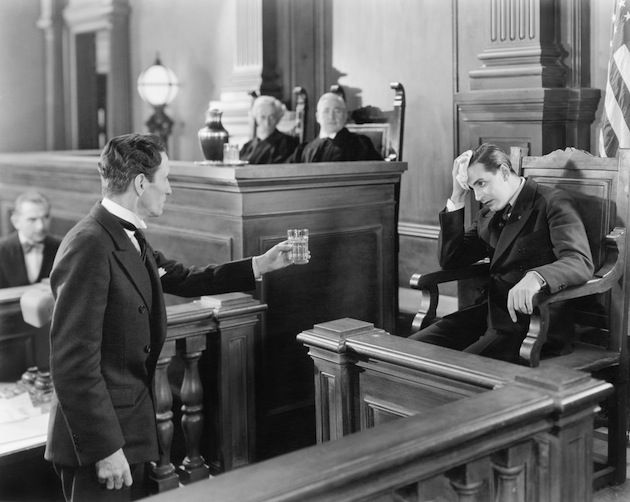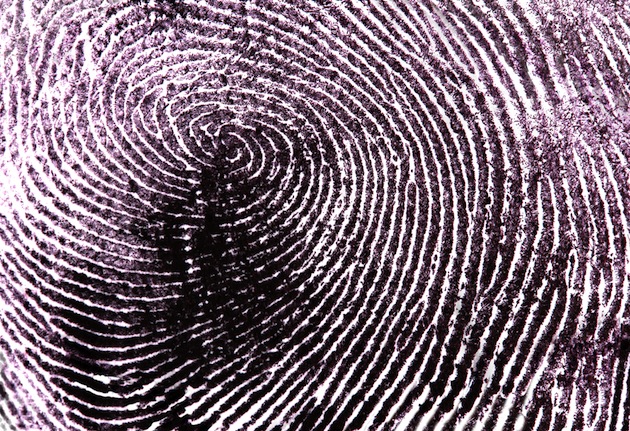Why would a person confess to a crime he didn’t commit? Plenty of reasons, it turns out. And it happens more often than you think.
In a police investigation, a confession is practically the equivalent of a finding a smoking gun in the hand of a perpetrator. In the mind of the public, the logical progression goes something like this: They said they did it, so that means they’re guilty, right? Even among legal professionals, as confirmed by law professor John Henry Wigmore’s 1923 evidence treatise, false confessions have been deemed so rare as to be “scarcely conceivable.”
While a jury’s verdict seeks a definitive declaration of guilt vs. innocence, what’s revealed from a confession is not so black and white. The truth of false confessions is that they happen a lot more than you might think—and for complicated reasons.
In fact, according to The Innocence Project, innocent defendants falsely confessed, pled guilty, or made incriminating statements in about 25 percent of DNA exonerations. But why would anyone want to be implicated and potentially locked away for a crime they didn’t perpetrate? And why don’t law enforcement officials and juries see through these false confessions?
There are quite a few reasons, actually:
1. The person being interrogated doesn’t know their rights.
In 1988, a 25-year-old trucker named Frank Sterling confessed to the murder of an elderly woman in Rochester, NY. He was convicted in 1992 and served 19 years before DNA testing implicated another man, Mark Christie, for the crime. Sterling was exonerated in 2010 after Christie admitted to the killing.
Had Sterling known that he could refuse to speak with police until he had an attorney present, he might have been spared almost two decades behind bars. Instead, he waived his Miranda Rights and was interrogated, without a lawyer, for more than 12 hours. (That was after finishing a 36-hour trucking shift). Sterling was exhausted, he explained years later, and told investigators what they wanted to hear, simply so his ordeal would end. It’s clear, years later, that he didn’t fully grasp that his “yeses” and nods constituted a confession.
2. Confessions are “contaminated.”
Confession contamination is one of the most common reasons that false confessions are often so convincing to investigators and juries.
Sometimes, contaminated confessions are accidental—the result of “sloppy police interrogation practices,” in which interrogators ask leading questions, or inadvertently share details about the crime. Former police detective Jim Trainum recalls a case early in his career, in which a murder suspect’s detailed confession was later disproved by her ironclad alibi.
When he reviewed the recording of his interrogation years later, he realized that he’d accidentally fed the suspect information about the crime by showing her credit card receipts. The details she parroted back to him made Trainum believe her confession. “And it’s like, ‘How did we not see that?'” he recalls in an interview with This American Life.
Law professor Steve Drizin believes that many times, contamination in the interrogation room is not so inadvertent. In a study related to wrongful convictions of youth, Drizin and his colleagues at Northwestern University School of Law looked at a series of false confessions by minors in Cook County, Illinois, between 1986 and 1999. They found that police not only leaked crime details to the suspects but actually crafted stories for them—stories that painted the young black suspects as depraved, sociopathic predators.
In fact, as Drizin notes for one particular case, the confessions resembled “pulp fiction.” Rife with gang jargon and invented dialogue, these confessions were engineered to play to stereotypes, and to jurors’ fears of escalating gang- and drug-related crime.
Eventually, DNA and other evidence proved the defendants’ innocence. These boys didn’t have specialized knowledge of the crimes; they had just been fed details by police officers and prosecutors.
3. The mental state and/or age of the confessor makes him vulnerable to manipulation.
Juveniles and people with below-average IQ are significantly more susceptible to giving false confessions. Take the infamous story of the West Memphis Three, who served 18 years after being convicted of killing three eight-year-old boys in 1993.
After 12 hours of police questioning, one of the suspects, Jessie Misskelley Jr., implicated himself and the other two, Damien Echols and Jason Baldwin, in the crime. These convictions (including a death sentence for Echols) were secured with little evidence other than Misskelley’s confession. Misskelley had a ninth-grade education and approximate IQ of 72.
“Misskelley’s confession was false, unreliable and included all sorts of statements totally inconsistent with how the crime happened,” writes UVA law professor Brandon L. Garrett, in the Harvard University Press blog. Though Misskelley revoked his confession, and DNA tests excluded all three suspects (and matched the victim’s stepfather), police declared the case closed.
Children and teens are more likely to confess falsely than adults, writes Sydney Schneider in the Journal of Criminal Law and Criminology, because they “have significant neurological deficiencies [compared to adults] that result in stark limitations of judgment.” In a 2004 study of 125 proven false confessions between 1974 and 2002, 63% of the confessors were under 25.
Young, “inexperienced defendants” are particularly susceptible to high-pressure interrogation techniques, Schneider suggests. For example, an investigator might bait them with language like, “Just tell me what you did, and I’ll let you see your parents.” Or they might scold the defendant, as one detective did in a false confession involving 15-year-old Jarvell Smart: “You’re making a mistake by sticking with a bogus story,” the detective told Smart (as reported by CBS San Francisco) a few hours before he confessed to participating in a shooting.
Additionally, people with mental disabilities have a history of false confessions because they feel that they need to agree with authority figures, and they don’t fully understand the consequences of their confessions.
4. Questionable interrogation methods manipulate or coerce suspects into confessing.
Some defendants claim that they supplied a false confession to end an uncomfortable ordeal or because they feared physical harm. Other times, law enforcement officials may lead suspects to believe that they have incriminating evidence against them (when they don’t), or that if they confess to the crime, they will receive a more lenient sentence (which they likely will not).
You’ve probably seen a dramatized version of this tactic on television: the “good-cop-bad-cop” interrogation method known as the “Reid Technique,” pioneered in the 1940s by Chicago police officer John Reid, and since employed by generations of cops. In a recent New Yorker piece, journalist Douglas Starr contends that the Reid Technique is founded on outdated behavioral science, borders on coercive, and may play a role in eliciting false admissions of guilt.
Preventing False Confessions
Now that we’ve established that false confessions can happen, how can we prevent them? Legal scholars have recommended several reforms to current law enforcement policies and practices:
1. Police should never question juveniles without an attorney present.
Wrongful conviction experts suggest that juveniles should always have a lawyer present when being questioned by police. An adult advocate should be there to help the teen understand what is being asked, and to prevent him or her from inadvertently condemning himself.
2. All police interrogations should be recorded.
The Innocence Project asserts that “the electronic recording of interrogations, from the reading of Miranda rights onward, is the single best reform available to stem the tide of false confessions.”
Recording interrogations provides a layer of accountability because, should they be taken to court, the recordings would allow outsiders to see how a suspect was treated by police. Recording investigations can also deter police from using illegal tactics to coerce a confession, and can uncover leakage of crime details during questioning.
“The electronic recording of interrogations, from the reading of Miranda rights onward, is the single best reform available to stem the tide of false confessions.” —The Innocence Project
In the case of the Misskelley and the Memphis Three, not all of the interrogations were recorded; there’s just no way to know what possible threats or techniques were used to extract a confession. (Only the last 20 minutes of Sterling’s interrogation were recorded by police.)
In light of Cook County’s multiple cases of false confessions, Illinois has established new laws that require electronic recording of an entire interrogation for cases of homicide and other serious felonies. This will replace the Cook County precedent in which police and prosecutors wrote out confessions for suspects to sign, or had suspects rehearse details of a confession before a court reporter or videographer was brought in to record the confession.
3. Adopt less coercive interrogation techniques.
Journalist Douglas Starr suggests an alternative to the manipulative Reid Technique: an interrogation tactic known by the acronym PEACE. Used in England, Wales, Denmark, New Zealand, and Newfoundland, PEACE “more closely resembles what journalists do,” Starr says in an interview with NPR’s Fresh Air. PEACE advocates a more straightforward approach and discourages deceptive and manipulative techniques.
In a 2012 New York Times op-ed, David K. Shipler adds the suggestion that certain deceptive aspects of interrogation methods like the Reid Technique be outlawed, such as lying to suspects about the possibility of leniency or about evidence that doesn’t exist. “Finally, post-conviction challenges of confessions could be assigned to judges and prosecutors other than those who tried the original cases,” he writes. “The natural unwillingness to admit a grave error should not have to be overcome for justice to be done.”
Summation:
A conviction is extremely difficult to overturn, even after new evidence is uncovered that points to a defendant’s innocence. No prosecutor, judge, or jury wants to admit that they locked up an innocent human being. And unfortunately, judges and juries are still, for the most part, unwilling to believe that anyone would confess to a crime they didn’t commit.
It’s difficult to estimate how many innocent people have been convicted on the strength of false confessions. Since 1989, DNA testing has exonerated more than 300 people; and “in about 25% of DNA exoneration cases,” the Innocence Project reports, “innocent defendants made incriminating statements, delivered outright confessions, or pled guilty.” However, many innocent defendants—more than we’ll ever know—have no chance of winning a DNA exoneration, because there’s no DNA evidence associated with the crime.
Raising public awareness and educating people about how the criminal justice system works—and revealing its flaws—can be a powerful way to repair the existing cracks in our judicial process. “The biggest misconception about false confessions is that you have to be crazy to confess to something you didn’t commit,” retired detective Jim Trainum told the Mid-Atlantic Innocence Project. “But that’s how interrogation works. We box you into a corner, and then we show you the light.”
About the Author:
Heidi Redlitz is a San Diego-based blogger who writes about crime, safety, and investigative issues in the real world and in cyberspace. Follow her on Twitter: @HeidiRedlitz.
Sources:
Confession Contamination in Cook County: Demonizing Youth in False Confession Narratives (Huffington Post, by Steve Drizin)
Confessions (This American Life)
Correcting and Preventing Wrongful Convictions in D.C., Maryland, and Virginia (Mid-Atlantic Innocence Project, by Jim Trainum)
False Confessions: A Review of 2013 (Huffington Post, by Steve Drizin)
False Confessions: Understand the Causes (The Innocence Project)
Getting It Wrong: Convicting the Innocent (Slate, by Brandon L. Garrett)
NorCal Experts Say Juveniles More Likely To Falsely Confess To Crimes (CBS San Francisco, by Linda Yee)
The West Memphis Three and False Confession (Harvard University Press Blog, by Brandon L. Garrett)
The Interview: Do police interrogation techniques produce false confessions? (The New Yorker, by Douglas Starr)
When Innocent Defendants Falsely Confess: Analyzing the Ramifications of Entering Alford Pleas in the Context of the Burgeoning Innocence Movement (The Journal of Criminal Law and Criminology, Northwestern University School of Law, by Sydney Schneider)
Why Do Innocent People Confess? (New York Times, by David K. Shipler)




